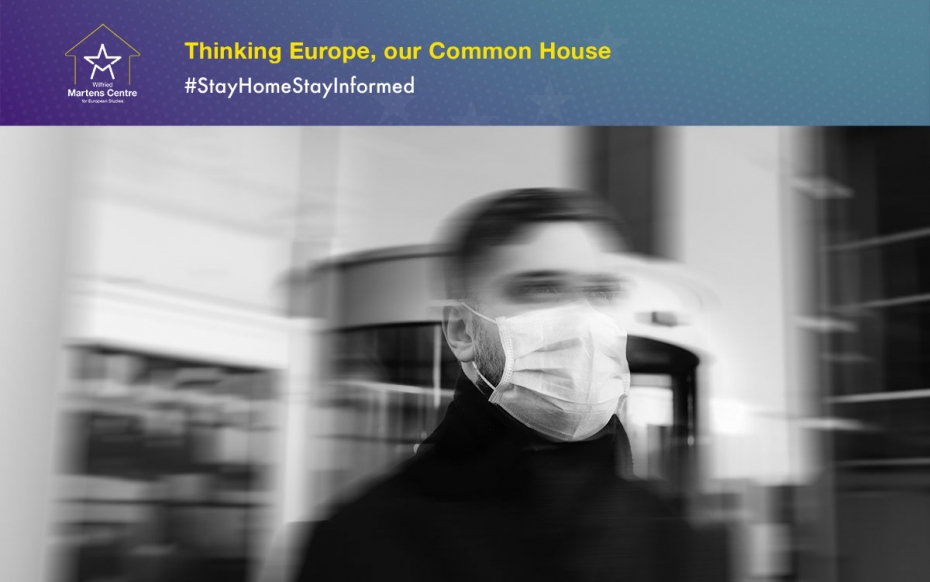Italy’s lesson for Europe: Flattening the curve isn’t enough, we must actively tame the Covid-19 epidemic
23 March 2020

Coronavirus disease 2019 (Covid-19) is spreading quickly in European countries, with the situation being most advanced – and worrying – in Italy. Many aspects of the disease are still unknown. How many people in Europe are currently infected and how many will be in the future? What percentage of the infected will need hospital care? How many of the infected will die from the disease?
As answers to these questions are still unknown, there are strikingly different scenarios presented by the main health institutes of the different EU member states. These different scenarios present end results where the final estimation of the infected and deceased can be different by a factor of ten or more.
As a result, there seem to be two different strategic approaches: one is to say that our main aim is to ‘flatten the curve’, aiming to reduce the speed of the spread of the virus by social distancing so it will not overwhelm the healthcare system and, in the most extreme cases, hospital care can be offered. This strategic thinking is most clearly currently expressed in the Netherlands, the United Kingdom and in countries where the disease has not yet spread severely.
The argument is that stopping society altogether for months is not feasible, and when society would become active again, the disease would start to spread anyway – thus again a new lock-down would be needed.
The other approach is to try to contain the spread of the virus as soon as possible. This is what China and other Asian countries have chosen as a strategy, this is what the World Health Organization (WHO) is recommending and clearly what Italy is opting for now.
During the epidemic, there has been a question over how much European health care systems can handle. Before we had some data from China, but as the situation in Italy is evolving, we are having a more detailed and reliable picture. The following conclusion is emerging: If we just try to decrease the speed of the virus’ spread, our health care systems will be overwhelmed. Many more people will require hospital care (read: potential lives saved) than what health care systems can offer. The bottleneck is found at the number of hospital beds, respiratory aids, oxygen pumps, and trained health care professionals. Italy is a concrete example of that reality.
Italy’s case has been painted as an exception, because the virus most probably spread there unnoticed for weeks. But what is often forgotten is that even if the (speculative) real amount of infected in Italy is around 300,000 people, a number way higher than any Italian official has estimated, it would still be only 0,5% of the whole population.
If the disease is allowed to impact the whole society, the mainstream speculative estimations of the percentage of the population infected vary from 30% to Angela Merkel’s maximum 70% in Germany. In Italy, the current estimate of 0,5% of the population to 30% is a long way to go, with the current volume of patients multiplied by 60 even within a longer period of time. Additionally, solely considering average national numbers is misleading, as there are regions where the disease is and will be more intense.
If Covid-19 is allowed to affect the whole society, even at a slower pace, the European health care systems will not be able to take care of all the patients needing care and thousands of people will die. The numbers will be just too big, just flattening the curve will not work out.
If European states want to save lives, they need to embrace now the measures taken by the Italian government in those countries where it has not yet been done: to implement confinement. This approach will have a strong negative impact on society, but so does the death of thousands of people just because of a lack of hospital care. In the upcoming weeks, the focus needs to be total in combating the virus. Passively by staying home as much as possible, and actively by urgently increasing the number of hospital beds, respiratory aids, and training of the temporary health care professionals.
Northern Italy’s health care system is one of the best in Europe. Hard-hit Bergamo’s main hospital let a camera crew in for the rest of Europe to know what an overwhelmed healthcare system looks like. For Italy today, the strategy is very clear: to stop the virus whatever the cost. Other European countries still have one to a few weeks before the situation will reach the same stage as in Italy. They should use them wisely.
Credits: Photo by Anastasiia Chepinska on Unsplash
ENJOYING THIS CONTENT?





















